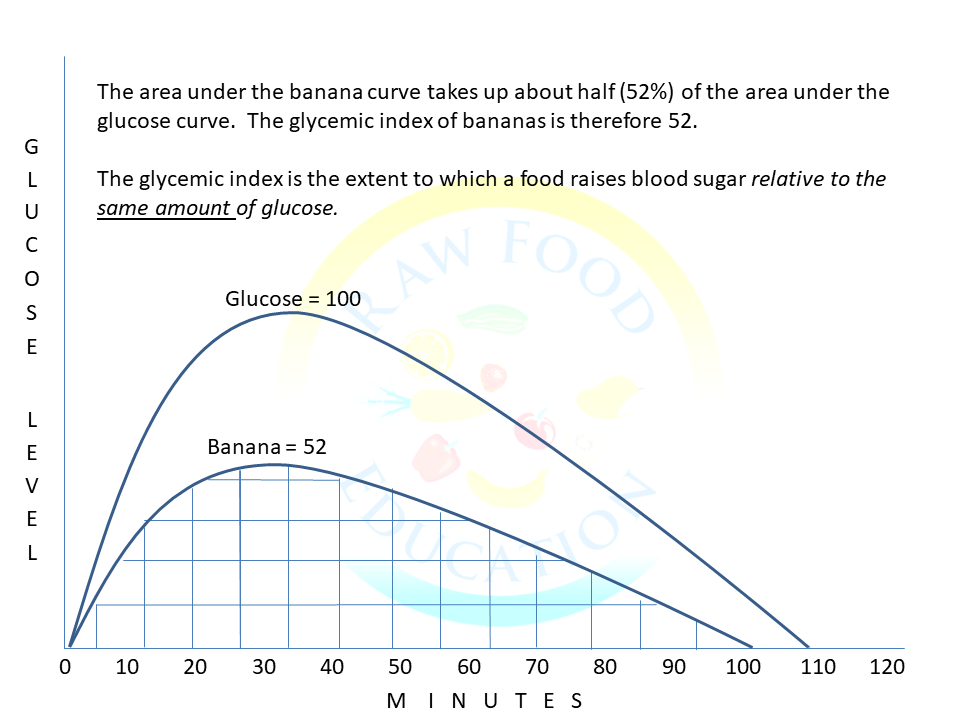Introduction
In our last newsletter we posted an article about a very useful blood sugar measurement called A1c. In this issue we look at another measurement that is often referred to when considering how to keep our blood sugar in an optimum range, known as the glycemic index. We have all heard about the glycemic index, but how is it determined, and how much relevance does it really have to the big picture of blood sugar regulation?
What is Blood Sugar?
“Blood sugar” is the concentration of a simple carbohydrate known as glucose in our blood. Glucose is the primary source of fuel for most cells in our body, so it is found in the bloodstream as it is being transported and distributed to those cells. The same characteristics that make glucose a good source of fuel also cause it to react with other molecules it comes in contact with. These “glycation” reactions lead to stiffness, inflammation, wrinkles, and a host of other problems. When this continues over time, circulation and nerve function becomes impaired, leading to numbness, tingling, amputations, vision problems, kidney problems, hypertension, heart disease, strokes, etc. It is therefore highly desirable to keep our blood sugar aka glucose levels in a healthfully low range.
The Glycemic Index
The glycemic index of a food is the degree to which that food raises blood sugar after being consumed. How though, is the glycemic index of a particular food determined? It starts by taking at least 8-10 people, feeding them a specified quantity of glucose, usually 50, 75, or 100 grams, and then measuring the blood sugar level of each participant at periodic intervals over the next two hours. In the figures below, only 4 sample subjects are shown for simplicity purposes.
Figure 1: Glucose response curves in 4 sample study subjects
As you can see, the resulting glucose response curve can vary widely depending upon the individual. Because of this, an average is taken of all of the study subjects. The “area under the curve” of the average curve is assigned a value of 100, to be used a reference point for the comparison food.
Figure 2: Average glucose response curve of study subjects
Then, under the same conditions as when given the glucose, the same study subjects consume the test food in a quantity that equals the same amount of carbohydrate as the glucose that was consumed initially. If the subjects consumed 100 grams of glucose for example, they will subsequently consume 100 grams of carbohydrate from the test food, in whole food form. Then just like with glucose, periodic blood sugar measurements are taken over the next two hours to determine the glucose response curves of the subjects for the test food, in this case bananas.
Figure 3: Bananas response curves in (the same) 4 sample study subjects
As we saw with glucose, the response curves vary among individuals. The curves are once again averaged out and an average banana response curve is obtained.
Figure 4: Average banana response curve of study subjects
Then the area under the average banana curve is compared to the area under the average glucose curve.
Figure 5: Average glucose curve vs. average banana curve
The area under the average banana curve is 52% of the area under the average glucose curve for the same individuals under the same set of circumstances. This means bananas raise blood sugar 52% as much as the same quantity of glucose consumed directly. As the average glucose response curve was assigned a glycemic index reference value of 100, bananas are assigned a glycemic index value of 52.
Figure 6: Average glucose curve vs. average banana curve determines the glycemic index of bananas.
Foods that have a glycemic index below 55 are considered low glycemic foods. From 56-69 is considered medium glycemic, while foods that rate at 70 or above are considered high glycemic foods.
Conclusion
Now is where the plot thickens. Brace yourself. As it turns out, the glycemic index is one of the least important factors in blood sugar regulation!!! In fact, it leads to a great deal of confusion and often leads people into a false sense of confidence while they continue to sow the seeds of unhealthy blood sugar regulation.
Stay tuned for upcoming newsletter articles to continue this discussion and find out what is most important in blood sugar regulation.
Copyright 2018 Drs. Rick and Karin Dina, D.C. All Rights Reserved
One of the best ways to keep in touch with us is to join our email list. You’ll receive a free copy of Our Top 12 Strategies for Long Term Success on A Raw Plant-Based Diet eBook along with regular information about raw food and plant-based diets and periodic promotions for our classes, events, and other offerings!

Thank you, Drs. Rick and Karin for all you do! I am dealing with type 1.5 diabetes and am following a whole food, plant based, low fat lifestyle, all raw except for some beans & an occasional sweet potato to help bulk up my carb intake. Thank you for your referral to the MD program which I have been involved with since 9/17. That has helped me a lot. This newsletter about the GI gave me some insight on why I can't eat bananas and others can enjoy them without suffering the consequences! They spike my BG 100+ points! I need to find other raw fruits that give me enough carbs, as I try to get close to 900/day to keep my weight on. Mangos don't agree with me--I get a rash. Any suggestions from you would be greatly appreciated!